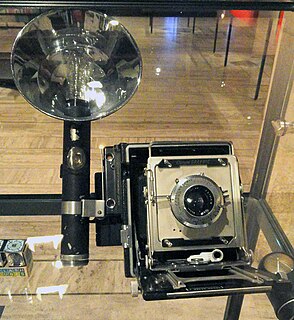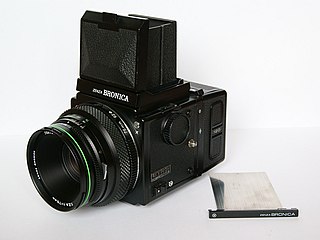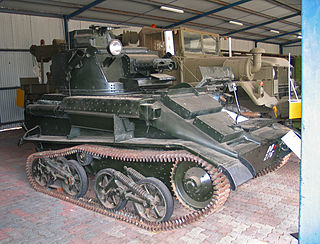Products
MPP's first major product was the Micro-Technical Camera, in 1948. This was far in advance of any other camera produced in Britain. Mark II followed in 1949; Mark III in 1951; Marks VI, VII and VIII in 1952, 1956, and 1963. (Marks IV and V were not sold.) These had the full versatility and quality of technical cameras; some long remained in professional use.
The Micro-Press Camera was a press camera available through the 1950s.

A press camera is a medium or large format view camera that was predominantly used by press photographers in the early to mid-20th century. It was largely replaced for press photography by 35mm film cameras in the 1960s, and subsequently, by digital cameras. The quintessential press camera was the Speed Graphic. Press cameras are still used as portable and rugged view cameras.
MPP is the only postwar British manufacturer of twin-lens reflex cameras. The Microcord (1951) was based on the Rolleicord; it was soon (1952) followed by the Microcord Mk II, with an improved shutter (the German Prontor). The Ross lens is of high quality. In 1958, MPP brought out the lever-wound Microflex, inspired by the Rolleiflex. This had excellent optics (by Taylor, Taylor and Hobson) and the camera was well made, but the crank invited hard use for which it was not designed. Shortly after its introduction, Britain dropped the high duty rates that had made Rollei equipment prohibitively expensive, and the Microflex had to be heavily discounted.

A twin-lens reflex camera (TLR) is a type of camera with two objective lenses of the same focal length. One of the lenses is the photographic objective or "taking lens", while the other is used for the viewfinder system, which is usually viewed from above at waist level.

The Rolleicord was a popular medium-format twin lens reflex camera made by Franke & Heidecke (Rollei) between 1933 and 1976. It was a simpler, less expensive version of the high-end Rolleiflex TLR, aimed at amateur photographers who wanted a high-quality camera but could not afford the expensive Rolleiflex. Several models of Rolleicord were made; the later models generally had more advanced features and tend to be valued higher in today's market.
Ross is the name of a succession of London-based lens designers and their company.
Other products included enlargers (even for large format), projectors, dark slides, carrying cases and a flashgun that was similar in design and appearance to Graflex models.

Graflex was a manufacturer that gave its brand name to several models of camera.
Canon Inc. is a Japanese multinational corporation specializing in the manufacture of imaging and optical products, including cameras, camcorders, photocopiers, steppers, computer printers and medical equipment. It's headquartered in Ōta, Tokyo, Japan.

Konica Minolta, Inc. is a Japanese multinational technology company headquartered in Marunouchi, Chiyoda, Tokyo, with offices in 49 countries worldwide. The company manufactures business and industrial imaging products, including copiers, laser printers, multi-functional peripherals (MFPs) and digital print systems for the production printing market. Konica Minolta's Managed Print Service (MPS) is called Optimised Print Services. The company also makes optical devices, including lenses and LCD film; medical and graphic imaging products, such as X-ray image processing systems, colour proofing systems, and X-ray film; photometers, 3-D digitizers, and other sensing products; and textile printers. It once had camera and photo operations inherited from Konica and Minolta but they were sold in 2006 to Sony, with Sony's Alpha series being the successor SLR division brand.

Pentax is a brand name used primarily by Japanese multinational imaging and electronics company Ricoh for cameras, sport optics, and CCTV optics. The brand was also used by Hoya Corporation for medical products & services, TI Asahi for surveying instruments, and Seiko Optical Products for certain optical lenses.
Mamiya Digital Imaging Co., Ltd. is a Japanese company that manufactures high-end cameras and other related photographic and optical equipment. With headquarters in Tokyo, it has two manufacturing plants and a workforce of over 200 people. The company was founded in May 1940 by camera designer Seiichi Mamiya and financial backer Tsunejiro Sugawara.

Canon EOS is an autofocus single-lens reflex camera (SLR) and mirrorless camera series produced by Canon Inc. Introduced in 1987 with the Canon EOS 650, all EOS cameras used 35 mm film until October 1996 when the EOS IX was released using the new and short-lived APS film. In 2000, the D30 was announced, as the first digital SLR designed and produced entirely by Canon. Since 2005, all newly announced EOS cameras have used digital image sensors rather than film. The EOS line is still in production as Canon's current digital SLR (DSLR) range, and, with the 2012 introduction of the Canon EOS M, Canon's mirrorless interchangeable-lens camera (MILC) system.

Cosina Co., Ltd. is a manufacturer of high-end optical glass, optical precision equipment, cameras, video and electronic related equipment, based in Nakano, Nagano Prefecture, Japan.

Bronica also Zenza Bronica was a Japanese manufacturer of classic medium-format roll film cameras and photographic equipment based in Tokyo, Japan. Their single-lens reflex (SLR) system-cameras competed with Pentax, Hasselblad, Mamiya and others in the medium-format camera market.

The Rolls-Royce Silver Dawn is a full-size luxury car that was produced by Rolls-Royce at their Crewe works between 1949 and 1955. It was the first Rolls-Royce car to be offered with a factory built body which it shared, along with its chassis, with the Bentley Mark VI until 1952 and then the Bentley R Type until production finished in 1955. The car was first introduced as an export only model. The left hand drive manual transmission models had a column gear change, while right hand drives had a floor change by the door. Only with the R Type based model was it officially available on the home market, from October 1953.

The Tank, Light, Mk VI was a British light tank, produced by Vickers-Armstrongs in the late 1930s, which saw service during the Second World War.

Topcon Corporation is a Japanese manufacturer of optical equipment for ophthalmology and surveying.

The Bentley Mark VI is an automobile from Bentley which was produced from 1946 to 1952.

Seiko Group is a Japanese corporate group consisting of three core companies Seiko Holdings Corp. (Seiko), Seiko Instruments Inc. (SII) and Seiko Epson Corp (Epson). They were independent companies linked together by the common thread of timepiece technology. Although they have some common shareholders including the key members of the Hattori family, the three companies in the Seiko Group are not affiliated. They are managed and operated completely independently. Epson has established its own brand image and rarely uses "Seiko."

Kiron Lenses were photographic lenses distributed by the Kiron Corporation, formerly based in Carson, California, United States.
Moviecam is a motion picture equipment company specializing in movie camera systems for 35 mm film. Originally started in Vienna as an in-house project of Fritz Gabriel Bauer and Walter Kindler's Moviegroup film production company in the late 1960s, the amount of research and development needed to create a new and modern motion picture camera system from scratch led to the formal creation of Moviecam as an independent corporate entity in 1976. Although only three camera models were produced in significant quantities for international usage, the high quality camera design, simplicity of usage compared to the contemporary models of Arri and Panavision, and integration of modern and pioneering camera features led to widespread usage in the film industry. Arri subsequently bought the company in the 1990s. At Arri, Bauer developed, together with Walter Trauninger and their camera development team, the Arricam System, which combined the basic movement and design of the Moviecam systems with the precision electronic parts and complement of camera accessories already designed by Arri. The Arricam cameras were released in 2000 and remain the flagship camera line of Arri's 35 mm products. Despite the fact that Moviecam cameras have not been manufactured for almost ten years, their quality and features have kept them in service to meet their consistent high demand by feature film shoots.
L.F. Deardorff & Sons, Inc., was a manufacturer of wooden-construction, large-format 4"⨉5" and larger bellows view camera from 1923 through 1988. Various models were constructed and used mostly by professional photographic studios.

The 35mm SLR camera Alpa-Reflex has its origins back in the 1930s when a Swiss precision mechanical manufacturer decided to diversify their product range, having mainly relied on manufacturing parts for the watch industry. They sought outside assistance and by 1939 the plans were ready and building cameras commenced at a very slow rate. The camera was eventually named the Alpa because it was light, pocketable, and might easily be brought along travelling in the Alps. The Alpa-Reflex is only predated by the Kine Exakta, the Sport, and the Praktiflex 35mm SLRs. The manufacturer was Pignons S.A, Ballaigues, and the designer was Jacques Bolsky born December 31, 1895 in Kiev as Yakob Bogopolsky. He emigrated to the United States of America once the design was completed. He was also the inventor of the renowned Bolsey and Bolex cine cameras.
Taylor Hobson is an English company founded in 1886 and located in Leicester, England. Originally a manufacturer of still camera and cine lenses, the company now manufactures precision metrology instruments—in particular, profilometers for the analysis of surface textures and forms.



















